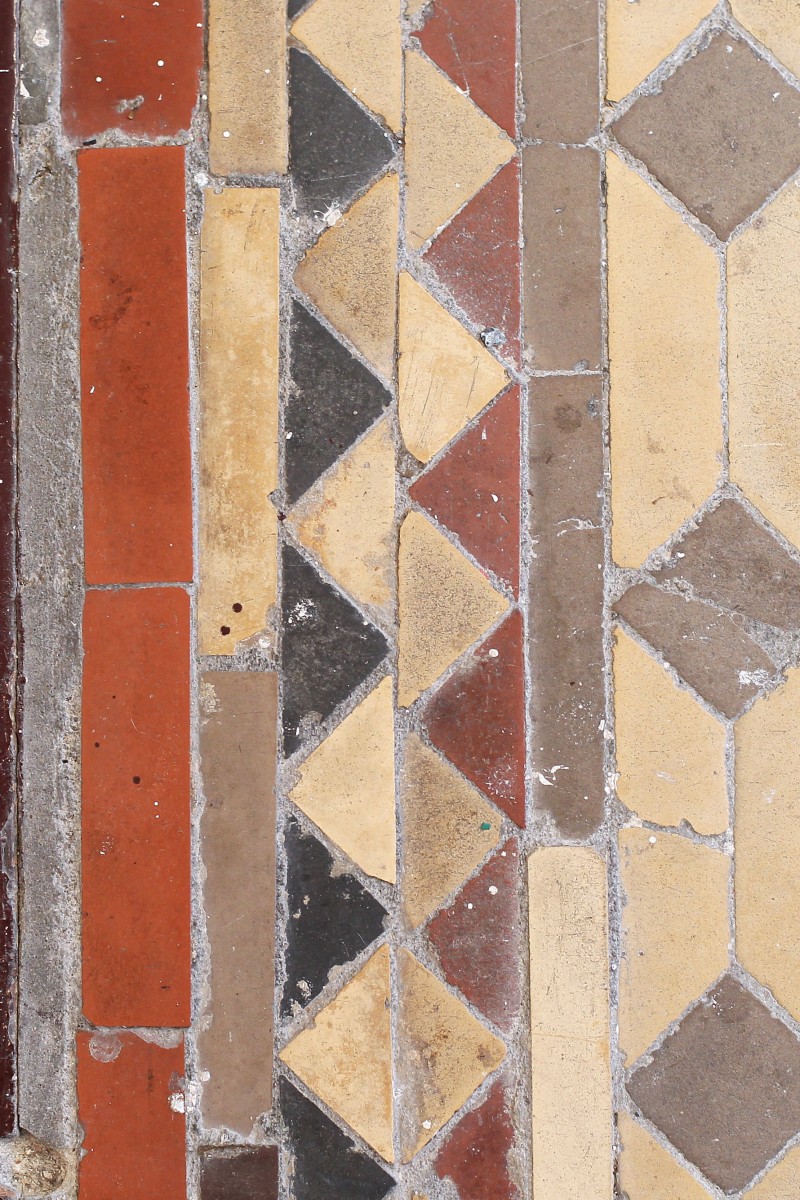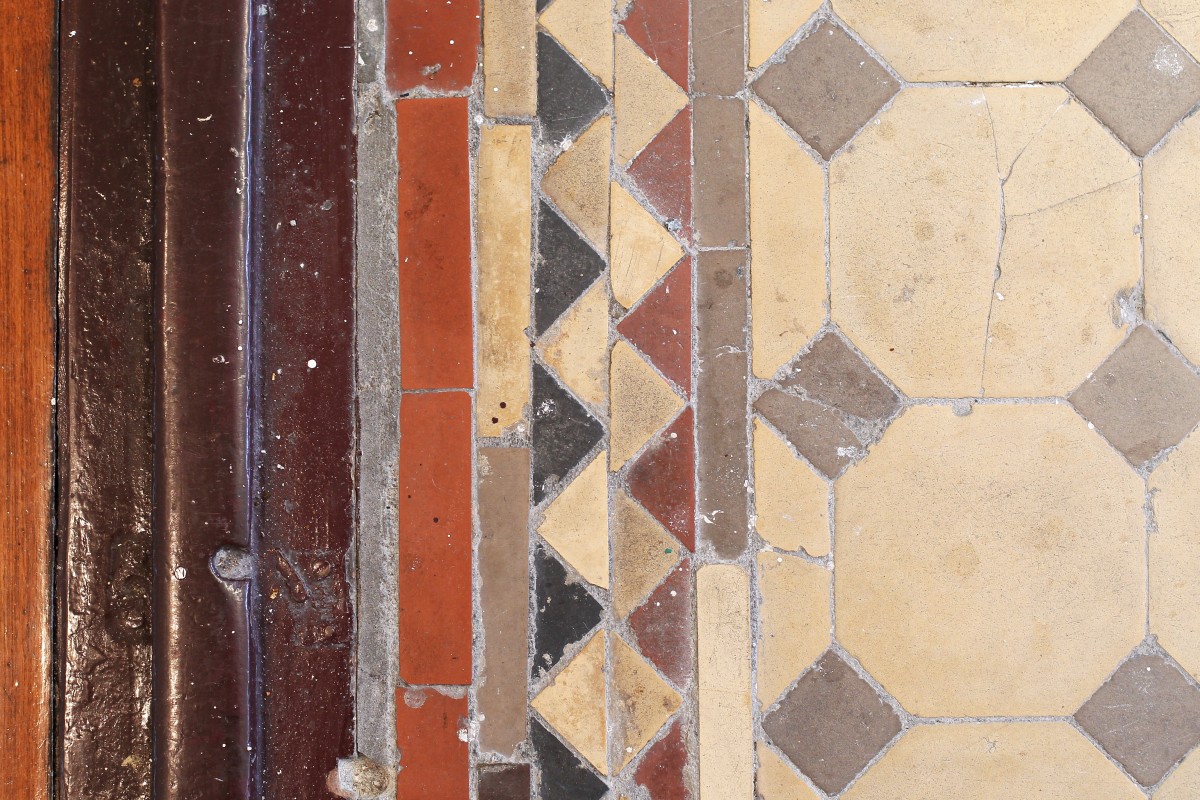
Study Buddy (Challenger): Getting to the bottom of Hong Kong flooring history, from earth to tiles and concrete
- Study Buddy Challenger is for students who want to take their understanding to the next level with difficult vocabulary and questions that will test their inference skills
- Check your reading comprehension using the questions below or in the linked Kahoot! game
 The Museum of
Medical Sciences in Hong Kong has high-quality examples of encaustic glazed floor tiles. Photo: Sam Tsang
The Museum of
Medical Sciences in Hong Kong has high-quality examples of encaustic glazed floor tiles. Photo: Sam TsangContent provided by British Council
Read the following text, and answer questions 1-9 below:
[1] Among the most overlooked parts of any building, and as essential to the structure as the foundation, roof or walls, are the floors and the various materials used to make them. During urban Hong Kong’s formative decades, the poorest homes – as in other parts of the world – had earthen floors. These were constantly swept and gradually pounded down by decades of the passage of (usually bare) feet. Consequently, a well-laid earthen floor, kept polished smooth to deter insects and other domestic vermin, was almost as hard as cement. Mats made from reed, rush, or split bamboo were used as floor coverings.
[2] Earthen floors remained commonplace in remote corners of the New Territories into the 1950s. By the end of that decade, concrete flooring – often laid courtesy of free bags of cement granted to impoverished villagers – had replaced them in most locations.
[3] From the late 19th century, local production of cement enabled these practical improvements. Green Island Cement began operations in Macau in 1886; another cement factory opened in Hung Hom in 1898. However, local air quality deterioration caused by this heavily polluting industry, along with hot soot and other nuisances, provided a constant supply of Letters to the Editor complaints for decades.
[4] In the early 20th century, polished concrete floors – which were even cheaper to produce than encaustic tiles – were becoming more common in domestic settings across Asia. Various chemical dyes were applied to the cement surface during the initial polishing process, which helped enliven otherwise drab grey interior floors. In Hong Kong, red oxide imparted a deep mahogany sheen to polished concrete floors. Care was needed as the pigment would come off on socks or bare feet if not properly dry, a periodic nuisance remaining a much-remembered detail of many local childhoods.
[5] In the meantime, another local industry developed as a direct result of cheap, readily-available cement: encaustic glazed floor tile production. Decorative and hard-wearing, encaustic floor tile blanks were printed in various patterns and colours, and then glazed. Manufactured wherever a supply of cement could be sourced – such as Hong Kong – floor tiles also provided an additional export industry. By the early 20th century, tiles like these had spread around the globe. These remained widespread in many places until about 1950; less economically advanced countries, such as Spain and Portugal at the time, used these materials into the 1970s.
[6] Like much else lost through redevelopment, these heritage floor tiles were once almost too ubiquitous to merit attention. Surviving high-quality examples can still be seen in Hong Kong – if one knows where to look. External corridor floors at the University of Hong Kong’s Main Building, built between 1910 and 1912, and the nearby Museum of Medical Sciences, originally built as a government bacteriological institute in 1906, have well-preserved tile floors that have borne up well over many decades of constant wear.
Source: South China Morning Post, May 15
Questions
Play a Kahoot! game about this story as a class or with your friends by clicking on the link here.
Or play on your own below to test your understanding:
1. Why did some homes in Hong Kong have earthen floors at the beginning of the city’s development according to paragraph 1?
2. What had replaced the New Territories’ earthen floors by the end of the 1950s?
A. mats made from split bamboo
B. concrete floors
C. white marble
D. unprocessed cement
3. Which group of people might have written the Letters to the Editor complaints mentioned in paragraph 3?
4. What does the word “mahogany” in paragraph 4 most likely describe?
A. a variety of stone the tiles resembled
B. a tool that creates a shiny, reflective surface
C. a particular shade or hue
D. a type of wood polishing
5. What common material is used in the manufacturing of concrete flooring and encaustic glazed floor tiles?
6. Find a word in paragraph 5 that describes something “existing over a large area”.
7. Why were encaustic tile floors common in places such as Spain and Portugal into the 1970s?
8. What reason does the writer hint at in paragraph 6 for why few examples of heritage floor tiles remain in Hong Kong?
A. The prevalence of these floors made them seem less valuable and, thus, not worth preserving.
B. They were badly damaged by war and typhoons before any efforts could be made to save them.
C. The University of Hong Kong and the Museum of Medical Sciences already have extensive collections of these tiles.
D. all of the above
9. In which section of a home improvement magazine might you find this article?
A. latest flooring trends
B. DIY ideas
C. project inspirations
D. none of the above
Answers
1. They were hard and deterred insects and other domestic vermin from entering homes.
2. B
3. Those who lived near Hung Hom and experienced the brunt of the poor air quality and hot soot from the cement factory there. / Hongkongers who wanted to draw awareness to the environmental impacts of the cement industry on the city. (accept other reasonable answers)
4. C
5. cement
6. widespread
7. They were less economically advanced countries at the time.
8. A
9. D
